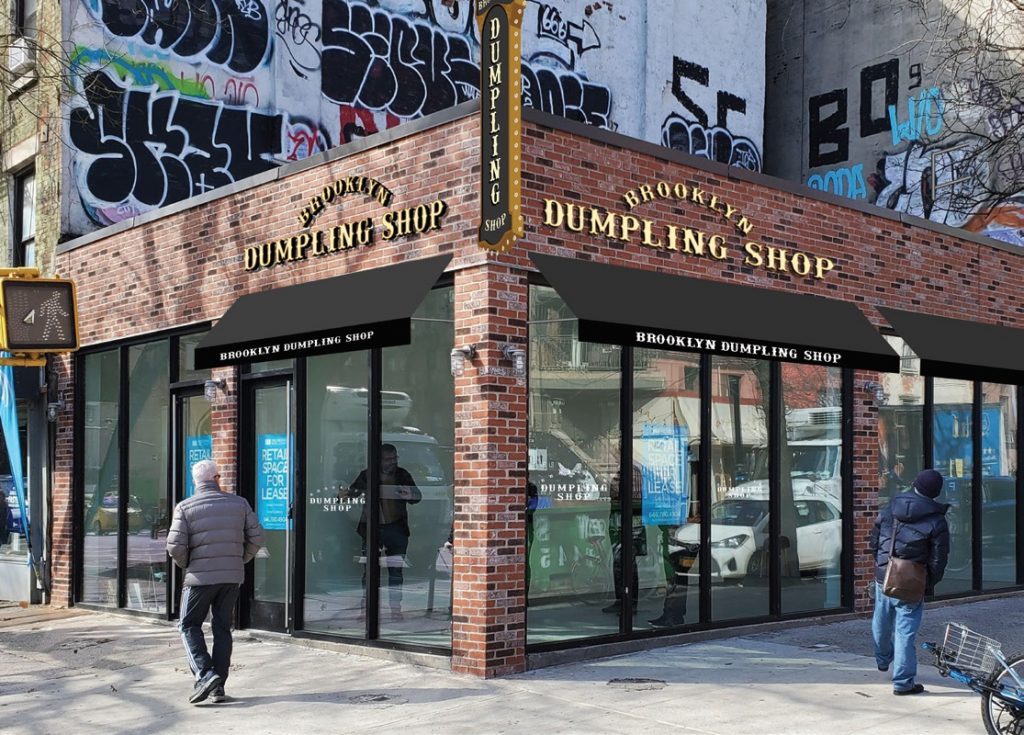When One Door Closes, Another Door Opens
Posted by estiator at 11 February, at 07 : 04 AM Print
COVER STORY
Greek restaurateurs are well-positioned to take advantage of the pandemic’s silver lining: affordable real estate.
By Michael Kaminer
By now, the headlines sound familiar: “54% of NY Restaurants Expect to Close in Six Months.” “Restaurant Closings Top 110,000 with Industry in Freefall.” “Chain Restaurants Permanently Close 1,500+ locations.”
But some in the industry are finding a silver lining in the carnage of the past 11 months. Each of those empty restaurants represents a tenant who is no longer paying rent to a landlord. And those landlords are eager to fill those vacant spaces.
For restaurateurs who can handle the risk of opening during a pandemic, those factors are creating a market of unprecedented opportunity.
“I think it’s an ideal time to go into business,” says Andre Neyrey, founder and CEO of Blackwood Hospitality, a restaurant consulting and brokerage firm. “I think there will be a big boom in opportunities, and a lot less competition once all of the moratoriums [on indoor dining] let up.”
Neyrey, a onetime restaurant owner who also helps clients develop food-service concepts, thinks a confluence of lower rents and pent-up demand will spark a new chapter for operators who dive in now.
“I’m seeing reduced rents, sometimes as much as 50% off, often for as long as the first six months,” he says. “I’m seeing some gross leases that are tied to the income of the tenant, which is good for an operator. And I’m seeing a lot of spaces that are fully furnished and equipped. People have been sitting on the fence, but this is a very good time to explore.”
A February or March lease-signing also can mean a summer opening, “which is a good season for operators,” Neyrey adds.
Delivery and takeout concepts are dominating new signings and openings, Neyrey says: “They’re huge, and they’re not going away.” Neither are ghost kitchens, the delivery-only, virtual food concepts that don’t require brick-and-mortar space. “I’m suggesting that clients make that part of their business,” he says.
Greek restaurant concepts have an edge in the market now, too, he believes. “Greek and Mediterranean have a very high ceiling right now,” Neyrey says. “The flavor profiles, healthier preparations, and portability mean there’s a lot of room for those concepts.”
Dan Rowe shares Neyrey’s bullishness. “As sad as Covid has been, it has created unbelievable opportunities,” says Rowe, founder and CEO of Fransmart, one of the world’s leading franchise developers. “I don’t want to sound tonedeaf to how it is—it sucks. But if you’re bringing a fresh set of eyes, there’s a new opportunity for you today.”
Rowe says real estate “is half of what we spend our time on” when building out franchise brands. A year ago, “it was a very tough time to be looking. Landlords were arrogant. Rents were expensive. The attitude was ‘Take it or leave it’,” he says. Now “landlords are humbled. It had been a landlord’s market; now it’s a tenant’s market. Big landlords are approaching us and sending us sites. You’re seeing crazy deals getting done. And a lot of these spaces are built out and zoned. A lot of people who have been looking to open are saying, ‘Wow, this is a hot area I couldn’t even get into a year ago.’”
Case in point: New York restaurateur Stratis Morfogen, profiled in December’s Estiator, whose Brooklyn Dumpling Shop franchise has been nurtured by Fransmart. “Stratis got a space next to Daniel Boulud’s Epicerie Boulud in the Oculus at the World Trade Center for a quarter of the rent and hundreds of thousands of dollars in TI [tenant improvement allowances],” Rowe says.
For Greek food in particular, “it’s the best time I’ve ever seen” to open, Rowe says. “People are more aware of Mediterranean food than ever. They like the flavors. Some landlords may not have a good Greek concept in their mix.” In fact, Fransmart brand Greek from Greece, led by CEO George Drosos, is planning more 40 locations in 2021.
“George is taking full advantage of the moment,” Rowe says. “He bought some 30-unit chain on Long Island. Landlords are throwing money at operators like him. His Greek bakery-café concept is hoodless and ventless, which landlords love. When landlords come to the Fransmart website, they key in on ‘Greek.’”
Even malls offer opportunities for savvy operators, Rowe suggests. “Look, half the malls are dead, and will continue to be. But the highest-volume malls are still busy, and so are their restaurants. Their customers get tired, and there’s no national Greek option,” he says.
Morfogen, the restaurateur behind Brooklyn Dumpling Shop, also reaped the benefits of a down market in another space he rented. As Estiator reported in December, Morfogen will open Pappas, a 14,000-squarefoot fine-dining restaurant in Manhattan’s once-untouchable West Village. The New York Post reports his deal includes $700,000 base rent or 8 percent of the gross; the lease includes a generous tenant-improvement allowance, Morfogen told the Post.
“Even if it works out to as much as $1 million a year, it’s a remarkably reasonable cost for so large a venue on a heavily trafficked block,” the Post reports.
James Famularo, who brokered that deal, thinks more restaurateurs can leverage the current climate to get equally favorable terms from once-obstreperous landlords.
“I believe there’s never been a better time since the Great Depression to rent spaces at ridiculous prices,” says Famularo, president of retail leasing at Meridian Capital in New York. “It’s not just that rents are low. It’s also about the concessions. Instead of three months, you may get four, five, or six months free. Depending on the conditions of the space, you could get a year free. And you can get TI money on top of that.” Around the country, “colleagues are telling me they’re doing F & B [food and beverage] deals with percentage rents only,” Famularo says.
Indeed, retail rents in New York City plummeted by more than 25% from the same time a year ago, according to a January report from the Real Estate Board of New York. The report also notes an increase in available retail space from 6% to 67% across Manhattan neighborhoods. “Recovery is going to take years, not months,” Mark Dicus, executive director of the Soho Broadway Initiative, told CNBC.
Restaurateurs with track records have an edge over first-timers in the current market, Famularo cautions. “No landlord will take that much of a risk on a first-time operator. It makes a big difference if you’re established,” he says. Still, “we’re all throwing darts blindfolded. You can project and project and project, but nothing is certain.”
One thing that is sure is that quick-service concepts, delivery-only, and fast food are dominating the market— and will continue to do so, Famularo says. “There will always be a demand for tablecloth and high-end, but anyone running a Michelin-starred restaurant is probably hitting the pause button right now,” he says. “That’s why we’re seeing such a spike in demand for space for ghost kitchens, which I think are a great idea. You can sell to everyone over the web, but without the heavy rent bills.”
Despite the industry’s grim numbers, Famularo remains “optimistic and bullish. By the end of this month, we’ll have several vaccines in distribution. Confidence will spike. We’re doing a slew of deals right now, and we are really busy,” he says.
One industry expert thinks landlords may not be that pliant, though. “You can’t just walk in and say you want a 50% discount from a landlord,” says Hiro Nishida, a hospitality-operations consultant who also advises venture capital and tech companies. “What scares landlords is a Joe Schmo who doesn’t understand numbers and is just asking for a rent reduction. Landlords are flexible, but that doesn’t mean they’re generous. And despite what you’re hearing, they’re not desperate, and they won’t take any offer they get,” he says.
Instead, having clear projections for your business is key to starting a productive conversation with a prospective landlord, Nishida advises. “Understand your numbers. Understand your branding and packaging. Understand your labor costs and finances,” he says. “Know your breakeven point so you can understand what kind of rent you can actually afford. As a landlord, I don’t want a space to be dark, but at the same time, I don’t want a restaurant to give me a Chapter 11 notice where I’ll be lining up with other creditors.”
That said, Nishida sees plenty of opportunity. “There will be a lot of second-generation restaurants that were operating until even six months ago, so you can get a space in great condition,” he says. “And if you have a concept that’s digitalized, with good systems, a focused brand, and a streamlined labor structure, it’s a good moment.” For first-time restaurateurs, Nishida advises waiting until the fall of 2021 and “taking the next six months to understand your business and your brand. Start small, start lean, and grow slowly.”
And rather than the huge spaces that seemed to dominate hospitality before the pandemic, small spaces will rule, Nishida says. “We are not going to see those 5,000- or 10,000-squarefoot restaurants again for a while,” he predicts. “It’ll be under 3,000 square feet, 60-to-70-seat concepts. You want to maximize productivity rather than have a lot of seats. About 2,500 square feet with 75 seats is the ideal ratio for productivity. Above that, it’s a different zone of risk.”
But Rowe, the Fransmart founder, says not to wait too long. “It’s such a tenant’s market, and there’s a closing window,” he warns. “You’re going to look back in a year and a half and wish you got more. It’s like looking back at Google stock or Bitcoin—you’re going to wonder why you didn’t put up a few more pennies.”



















